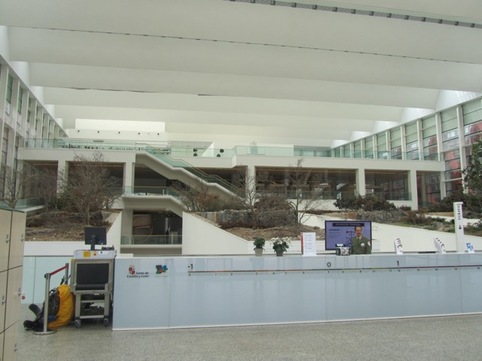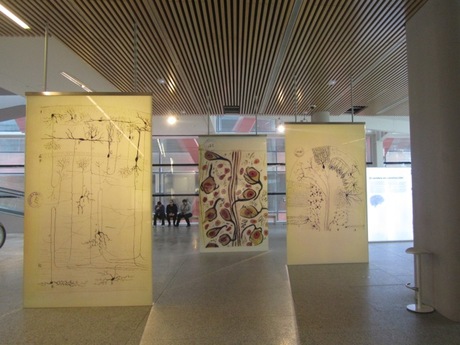Rediscovered in the 19th century after the caves collapsed in the late stone age, the paintings at Altamira were the very first stone age paintings to be found in modern times, and there was enormous scepticism about them at first: people simply didn't believe such extraordinary paintings could be so old.
Nowadays, you can’t actually go into the caves at Altamira (except by special arrangement), since the environment is too delicate to sustain the massive numbers of tourists. The caves were shut to the general public in the 1970. In 2001 a superb life-size fibreglass replica of the caves and all the paintings within was opened:
The exhibition is particularly illuminating about the paintings themselves, showing how the paintings were made, as well as speculating on their functions, and illustrating the far-reaching influence of the discoveries of these ancient art works on modern art: Picasso is quoted as saying: ‘After Altamira, everything is decadence.’
Learning about how the paintings were made was perhaps the most interesting bit. I had little idea how sophisticated the techniques used were – not only using the contours of the rock but also engraving the outlines and major details of the figures before painting them in using different pigments and a variety of ‘smudging’ techniques to express movement, light and shade etc. Paint was applied using fingers, fur rags, and sometimes even airbrushing – blowing paint through tubes made from birds’ bones – depending on what effect was required. (Pictures below from the internet).
In fact, one of the revelations of this museum was a sense of how recent these paintings are, relatively speaking, and of the relative continuity between them and modernity, something I’d never quite sensed before. If you’re anything like me, you probably have incredibly little grasp of the chronology of things in the very distant past, before the Greeks and Romans, say. Just how long ago were they? This museum really helped me to grasp the relative time scales concerned. The paintings at Altamira are between 18,000 and 14,000 years old, dating from the last centuries of the Palaeolithic world of hunter-gathering before the Neolithic world of agriculture began around 10,000 years ago – not so long when you think that the late Stone Age (Stonehenge etc.) and the start of the Bronze Age in the near East was only about 5,000 years ago, and the Anglo-Saxons 1,500 years ago.
The museum was also excellent on explaining the archaeology of the caves, and the extraordinary events of the nineteenth century which led to the discovery and interpretation of these works of art which forced a revolution in understanding of history and culture.






















 RSS Feed
RSS Feed